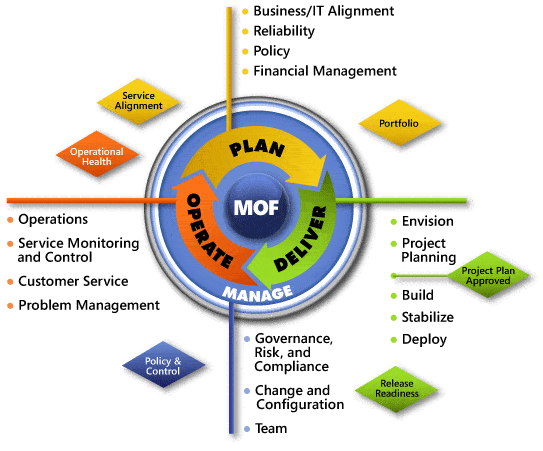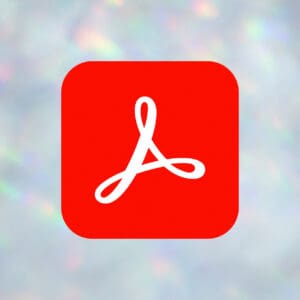Thought it would be good to go over a Microsoft Operations Framework breakdown. The organization I work for is considering moving to this framework but they’re also considering the ITIL service framework as well.
Table of Contents
What is an Operational Framework?
An operational framework in it’s basic form is a guide to an organization’s setup. The framework gives a 1,000 foot view of how an organization does business, inside and out.
Besides giving an overview, a framework also outlines policies, procedures, standards, or other guiding documentation. This type of overview isn’t just regular department or organization wide tasks, it’s also a great indicator of what the organization or department will target in future goals.
The great thing about tested frameworks is they are fairly modular and some play nice with others. These don’t have to be official, time tested frameworks either. They can be inhouse developed frameworks. In fact, most organizations that use frameworks use more than one to achieve their goals.
What is Microsoft Operations Framework?
The Microsoft Operations Framework (MOF) is an open source framework derived of best practices, principles, and activities that provide a focus on reliability in IT solutions and services.
MOF provides question-based guidance that allows you to determine what is needed for your organization at different periods of time. The ideal result is to create, operate, and support IT services while making sure IT delivers expected business value at an acceptable level of risk.

MOF is Microsoft’s structured approach to helping its customers achieve operational excellence across the entire IT service lifecycle by providing an adaptable and inclusive framework to improve costs, productivity, and reliability. MOF is composed of three phases—Plan, Deliver, and Operate—with an underlying Management Layer. MOF integrates community-generated processes; governance, risk, and compliance activities; management reviews; and best practices from Microsoft Solutions Framework (MSF) to provide concise and meaningful guidance
Notice how it said lifecycle. The MOF encompasses all processes involved in managing IT services:
- Conception
- Development
- Operation
- Maintenance
- Retirement
MOF organizes these processes and activities into Service Management Functions (SMFs).
SMFs are phases with goals essentially. Progress is measured in step with normal management action; evaluation and ultimately progression.
One of the best parts of the MOF is that it’s open source – licensed to all under the Creative Commons Attribution License. In short, when using the MOF documentation, provide the following attribution: The Microsoft Operations Framework (MOF) 4.0 is provided with permission from Microsoft Corporation.
For more information, you can visit their post explaining this in the MOF blog.
Update: That MOF page/blog post (http://blogs.technet.com/mof/archive/2008/09/12/mof-4-0-now-under-creative-commons-attribution-3-0-license-freely-adapt-mof-for-your-business-needs.aspx) has been disabled by Microsoft. You can check out this book on Amazon.
One of the first things people realize when looking at implementing a service management framework, whether it is ITIL, MOF, or another, is that they must not only be adopted but also adapted to your individual organization’s needs. You have to decide which of the described processes are relevant to your requirements and to what depth to apply them. this is true whether you are a consultant trying to make a living assisting others in their implementations, or a IT Manager trying to decide how improve upon your organization’s existing change control.
MOF 4.0 now fully supports this need for flexibility and the ability to remix, adapt, and shuffle the content with the adoption of the Creative Commons Attribution 3.0 Unported license. This license allows you to freely Share (copy, distribute, or transmit) any of the MOF content and Remix (adapt) that content to suit your needs. For a full legal explanation of the terms of the license, please refer to the Creative Commons website.
Let us know how you take advantage of this as we’re looking forward to seeing what you come up with!
Getting Started With MOF
The MOF guidance contains a bunch of phase overviews and SMF guides that outline successful IT service management.
IT service management starts at the assessment that launches a new or improved service, goes through the process of optimizing an existing service, and ends at the retirement of an outdated service.
The guidance applies to a number of important IT personnel – CIOs, managers, and regular professionals.
- CIOs – overview guides to see the big picture.
- Managers – overview and workflow information in function-specific guides to understand IT service strategies.
- Professionals – function-specific guides to implement MOF.
Go to the Microsoft Operations Framework 4.0 page to see all the downloads available to you. Next up we’ll go through modules that explain the makeup from a professional services group.

Module 1
Module 2
Module 3
Module 4
Module 5
Module 6
What about module 6? It appears to be missing from this author’s playlist.
Conclusion
Not too bad. It seems straight forward but adoption time, buy in power, and framework longevity seems to be a cause of concern. I see a lot of positivity surrounding this framework with many article writers drinking the Microsoft framework Kool-aid but not a whole lot of case studies.
Update: Apparently my hesitation wasn’t misplaced as many MOF links are now broken or the pages are disabled. Furthermore, many MOF pages that are still standing are in archive mode. Apparently, this framework wasn’t meant to last. I still like it. As I’ve studied up on ITIL, there are many similarities and end goals.
What do you think? Sound off in the comments below if you’ve studied up on the MOF. Have you used this framework or adopted something else?
What About ITIL?
ITIL is another beast that I haven’t gone into yet. If you want you can read the differences between the MOF and ITIL in the meantime.
- How Microsoft Operations Framework 4.0 enhances IT service management at TechTarget
- ITIL vs. MOF: Find the best IT framework option for the midmarket at TechTarget
- ITIL Certifications Mean to Your IT Management Practices at CIO.com
Article Sources
- Microsoft Operations Framework 4.0 on Microsoft Docs
- MOF Overview on Microsoft Docs
- MOF licensed under Creative Commons on Microsoft TechNet
- Microsoft Operations Framework (MOF) 4.0 Fundamentals on Microsoft TechNet







